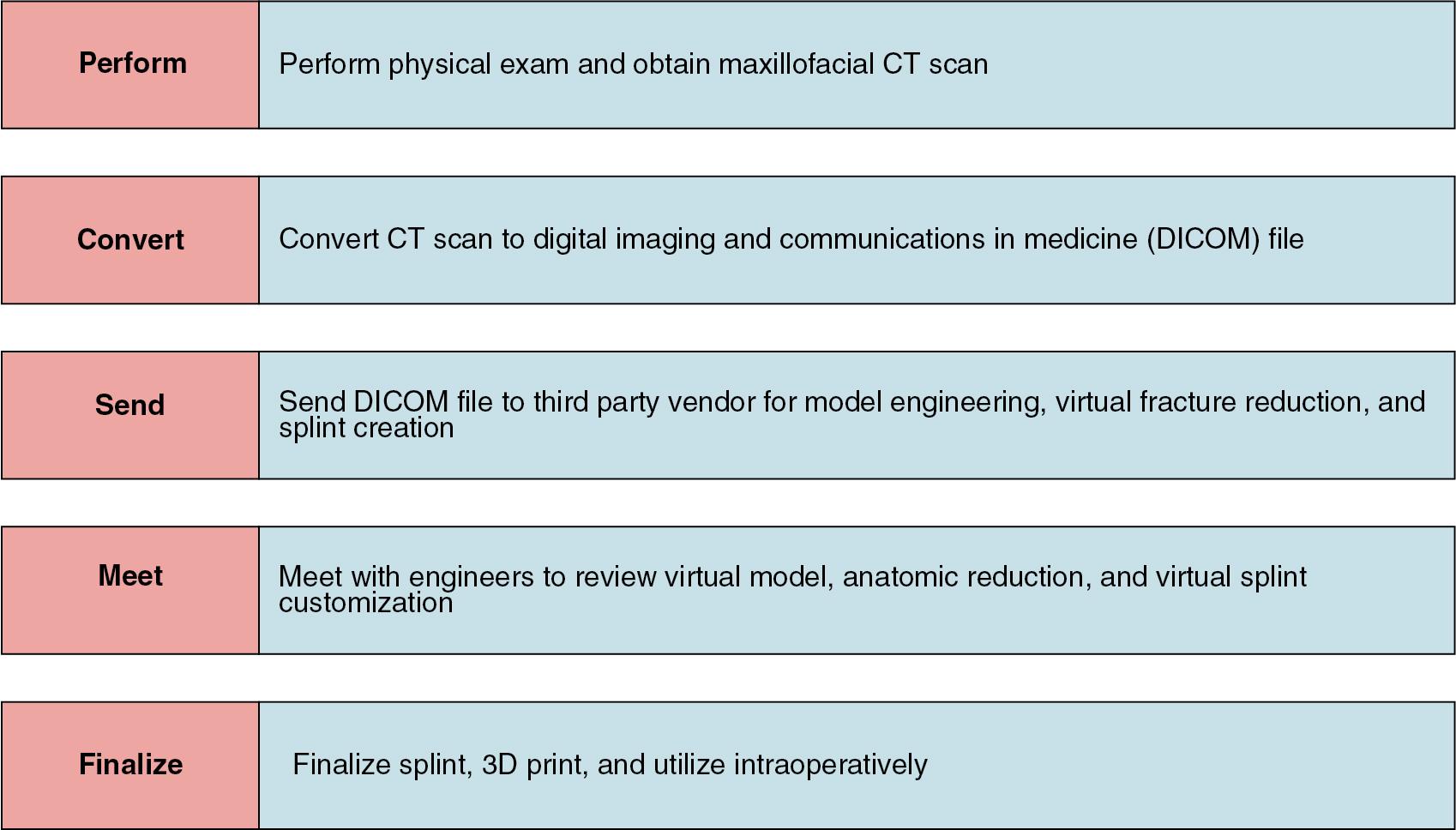Physical Address
304 North Cardinal St.
Dorchester Center, MA 02124
Complex maxillomandibular fractures can have devastating functional and aesthetic outcomes for patients. Traumatic occlusal splints can act as surgical guides for fracture reduction which can then serve as the foundation upon which the remainder of the face may be reconstructed. The occlusal splint may be uniquely helpful in patients with extensive comminuted fractures and in those who are partially edentulous. The use of these splints improves the accuracy of the bony alignment, decreases total treatment time due to improved stabilization and elimination of trial-and-error articulation on the day of surgery, and may reduce the need for subsequent surgeries for complications such as malocclusion.
In patients with complex facial fractures involving the maxillomandibular unit, the fundamental objective should be to first establish the premorbid occlusion. Once this has been established, the framework for the remainder of the surgery can be based around the reduced maxillomandibular region. The reasons for this are twofold. Primarily, occlusion is important for aligning the physical components of the face: muscles of mastication, suprahyoid muscles, dentition, and the temporomandibular joint. , Proper occlusion will allow for optimal functional outcomes and allow the patient to remain pain free. Malocclusion is a common complication of complex facial fracture reconstruction that results in functional impairment and abnormal cosmesis. , This functional impairment is a common cause for subsequent operations to correct the occlusal disharmony. , Secondarily, establishing premorbid occlusion can help to simplify the procedure in a patient who may have many fractured fragments. , , , ,
Traditionally, splint fabrication began by taking preoperative impressions from patients who had sustained complex facial fractures, from which dental casts were then made. This is a laborious, time-consuming process requiring experience with obtaining dental impressions and creating plaster casts, which requires physical equipment and space in the form of a dental lab. , Once the impressions have set, surgeons take these casts and section them to replicate the fracture lines. From there, each tooth-bearing segment is repositioned to recreate the putative premorbid arch width, from the dental anatomy alone. Lastly, the casts are mounted on an articulator to establish the maxillomandibular relationship and used to fashion acrylic occlusal splints.
Such splints have gained popularity given their ability to facilitate the dental relationship quickly and accurately. , With the introduction of computer-assisted design/computer-assisted manufacturing (CAD/CAM) to medicine in the 1990s, the ability of physicians to develop rapid prototypes has grown exponentially. In fact, computer-assisted surgical planning (CaSP) and three-dimensional (3D) printed splints have effectively replaced hand-designed splints for orthognathic cases. Several studies cite the improved efficacy, cost, and accuracy with CAD as compared to traditionally fabricated splints. , In these cases, computed tomography (CT) scans are combined with data from digitized dental casts or data obtained directly from intraoral digital scanners. This is less commonly performed in the trauma setting due to difficulties in obtaining the impressions or digital scans of the teeth in hospitalized patients. By utilizing modern CAD/CAM technology, occlusal splints can be created with CT scans alone and without the need for additional dental data.
Prior to pursuing facial reconstruction, all other life-threatening issues should be addressed first. Afterwards, a thorough physical exam should be performed and then followed up with a dedicated maxillofacial CT scan with slice thicknesses of 1.25 mm or less. The scan should include full imaging of the dental arch and palate with the gantry oriented perpendicular to the occlusal plane and symmetrically with midline. Previous case studies have established that, for facial trauma, the use of occlusal splints can effectively reduce operative time and offers surgical advantages such as improved accuracy. , This is particularly the case for complex, comminuted fracture patterns, because the splints allow for easier, more reliable alignment into class I occlusion for patients with multisegment maxillomandibular fractures (MMF) and partially edentulous cases with considerable savings in intraoperative time.
The accuracy of the model will be heavily influenced by the quality of the scan, thus higher resolution scans will produce the most optimal models. CT scans of 1.25 mm or smaller slice thickness provide adequate resolution for model creation. Dental detail can be enhanced, as in elective orthognathic cases, with the inclusion of dental casts or digital intraoral scans. However, if dental details are not enhanced, we have found that by making small allowances or offsets up to 1 mm to the cuspal grooves, splints of sufficient fidelity can be made from the thin-cut CT maxillofacial scans alone; when these splints are used in the context of virtually designed fracture reduction models and other adjuncts, anatomic restoration can be achieved, and premorbid occlusion adequately reattained. Furthermore, the combination of MMF with plate and screw fixation can help to secure additional accuracy, particularly in cases of significant comminution when bone stock may be inadequate for rigid plate fixation.
The creation of these occlusal splints is facilitated by third-party vendors. With widespread internet availability and the ability of vendors to expeditiously mail the finalized products, the only limiting factor in taking advantage of this technology would be the availability of high-resolution imaging, which is essential for creation of the model. Thus, this technology should be accessible to almost everyone who requires it. A commonly used vendor for the creation of these splints is the Individual Patient Solutions (IPS) division of the KLS Martin® Group (Jacksonville, Florida).


Become a Clinical Tree membership for Full access and enjoy Unlimited articles
If you are a member. Log in here